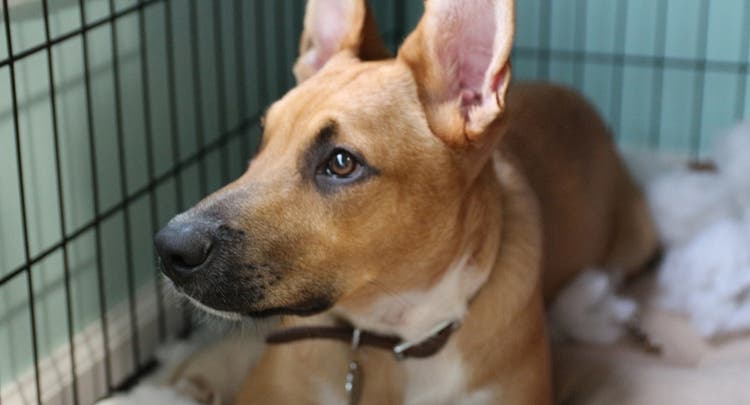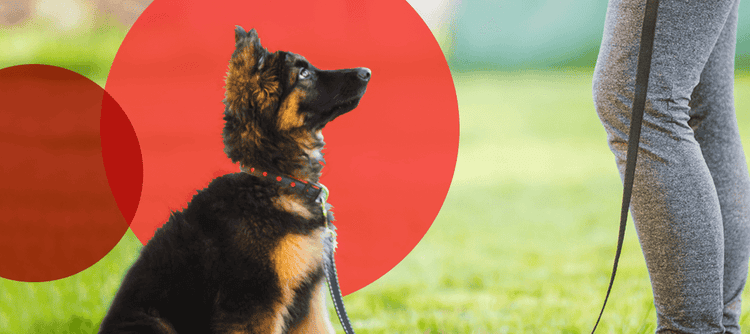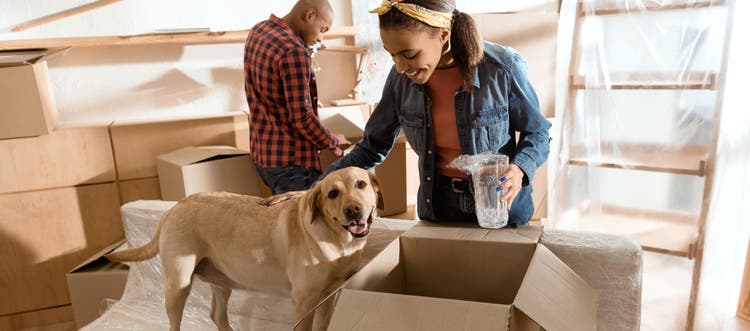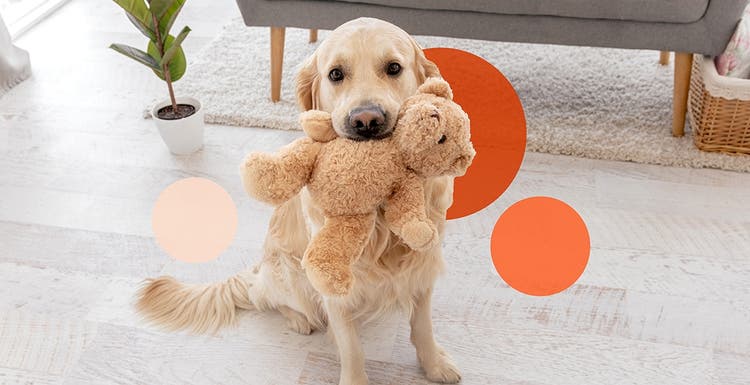A step-by-step guide to crate training.
Many pet owners feel guilty about putting their dog in a crate. They worry that confining their dog to a small space is cruel or mean-spirited. If you can relate, take comfort in knowing that even the most social dog needs a space to call their own.
Why Crate Train Your Dog?
Crates are indoor kennels that provide dogs a cozy space that mimics the den their undomesticated wolf ancestors might have created in the wilderness. Crates help make a dog feel safe and secure, and can make life much easier for dogs with separation anxiety.
Crates aren’t only useful for calming your dog’s separation anxiety; they can also help with:
- House-training a puppy: Your dog will be reluctant to soil the crate where they sleep, so they’ll be more likely to let you know when they need to go outside.
- Practicing for a vet visit or a stay in a kennel or doggy day care
- Providing a dog with a safe space when they feel nervous or frightened, such as during fireworks or parties
How to Choose the Right-sized Crate
Size is an important consideration when looking for a crate. The crate should be big enough for your dog to stand up in when fully grown. Measure your dog’s length and height and know their current weight and anticipated full-grown weight. Knowing these numbers will help you select the perfect crate for your dog, as most crates come with measurement guides to help you select the correct size.
Many kennels come with dividers to help reduce the crate size for a smaller puppy. Most puppies need a smaller crate to prevent or discourage them from defecating and urinating in it. However, they should have enough room to stand up, spin around and lay down in the crate. These dividers can be removed once your puppy grows large enough for the full-sized crate.
Crate Training Guide
Step 1: Create a Welcoming Space
Once you have your new kennel, ensure it’s a welcoming place for your dog. Place some comfortable bedding and a couple of your dog’s favorite toys inside to help entice your pup to explore the new crate. Using a blanket or toy that smells familiar will also help encourage your dog to go inside.
During this process, keep the door to the crate secured open so it doesn’t bang shut and scare your dog. Leave the door to the kennel open for a few days to help your dog get used to it.
Your dog may not show any interest in the crate at first. If this is the case, place a few treats inside while your dog is watching to help lure them inside. If this doesn’t work, try making a breadcrumb trail of food leading to the crate to entice your dog to go inside. Try to place these treats as far inside the crate as possible so your dog has to go all the way inside the crate to get a treat.
These steps will help establish a positive association between your dog and their crate.
Step 2: Use the Food Bowl
Once your dog is regularly entering their kennel for treats, you can progress to the next step: introducing a food bowl in the crate. Here’s how to do it.
- Place your dog’s food bowl inside the crate to encourage them to begin eating their meals in the crate.
- Your dog may be hesitant to eat in the crate at first, but with some time, they will choose their food over uncertainty.
- After your dog has started to get comfortable with meals inside the crate, carefully and quietly close the door to the kennel while they eat. Your dog probably won’t notice this change while they’re busy eating.
- Your dog may whine to get out of their crate, so repeat this process and gradually increase the amount of time your dog stays in the kennel after meals.
Once your dog is more comfortable spending time eating in the crate, begin associating a certain command like “kennel” or “crate” with your dog’s time in the crate. To do this, stand by your crate and call your dog to you. With a treat, give your preferred command. Once your dog is inside, give them the treat.
Remember: Repetition is key during the beginning of crate training. Dogs crave routines, and the more time your dog spends in the crate, the easier the training will go. Work your way up to 20-30 minutes of crate time while you are out of your dog’s sight before you progress to the next step.
Step 3: Work Up to Longer Crate Time
Now that you and your dog have mastered these short periods inside the crate, you’re ready to leave your dog in the crate while you aren’t home. If your dog whines excessively, it may be a sign you’ve moved too fast in the training process. If so, return to Step 2 and work up to Step 3.
When you return home after your dog has been in the crate for a longer period of time, resist the urge to greet them with too much excitement. Your dog will be very excited to see you, but don’t encourage this behavior by rushing over to them as soon as you get home. Rather, wait a few minutes, put your bags away or take off your coat and wait until your dog has settled down a bit before you approach them and let them out of their crate calmly.
Other Crate Training Tips
• Vary the times you crate your dog.
If you only crate your dog when you’re about to leave the house, they may negatively associate their crate with your absence. Instead, encourage your dog to go to their kennel for naps during the day or have them go to their crate before they get a chew toy. This variation will help reinforce the crate as a safe and fun place for your dog to spend time.
• Keep the crate part of your dog’s routine.
Crate your dog at night and let them out in the morning for a bathroom break and a meal. While your dog is sleeping in their crate at night, keep the crate close to you so your dog doesn’t feel punished or isolated. This type of routine and positive association will help when you need to crate your dog for vet visits or travel.
• Use crate training in conjunction with housetraining.
Crate training can be a wonderful potty-training tool, but it is just one of many steps on the way to dog obedience and good manners. Learn more about dog obedience and training tips to keep your puppy learning long after they are potty trained and crate trained.
Crate training a dog can feel daunting, and your pup may not accept their crate overnight. But with time and patience, your dog will come to accept their crate as their own personal space — somewhere they can retreat, rest and feel safe.








